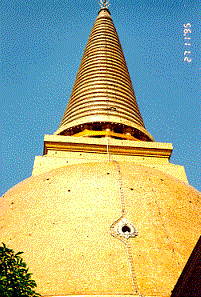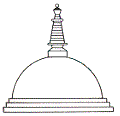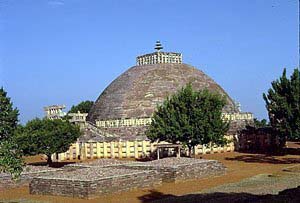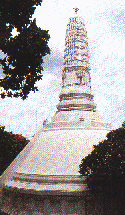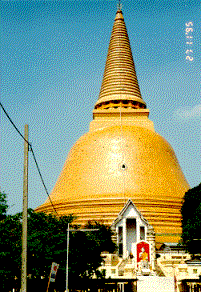|
The
Legend of Phra Pathom Chedi
Long ago, The queen of Nakhon
Chaisri (Nakhon Pathom) gave birth to a son. A prediction warned Phya Kong,
the king of Nakhon Chaisri, that he would be killed by his son so he ordered
the baby to be floated down a river on a raft to a forest where he was
found and raised by an old woman called Yai Hom. The youth, Phya Pan was
adopted by the king of Ratchaburi, a vassal of Phya Kong. Wanting to free
Ratchaburi from the control of Phya Kong, Phya Pan waged war against his
feudal lord and killed Phya Kong. When he learnt that he had killed his
father, he was so angry at Yai Hom for not telling him the truth of his
birth, that he killed Yai Hom with one stroke of his sword. Now, he had
committed two great sins by killing his own father and killing the poor
old woman who had raised him. He was so sad that he wanted to commit suicide
but, by committing suicide, he would have commited another great sin. The
monks told him to build a stupa that reaches the height where the doves
fly and dedicate it to the Buddha, to atone for his sins. So, Phya Pan
built a immense stupa called the Phra Pathom Chedi to enshrine relics of
the Buddha. He also built another stupa called the Phra Phratone Chedi,
to the east of the Phra Pathom Chedi, and dedicated it to Yai Hom.
|



